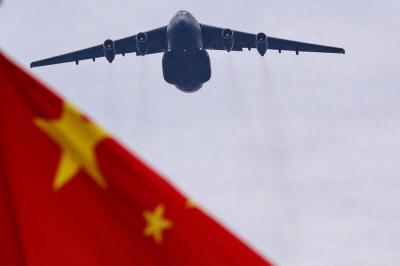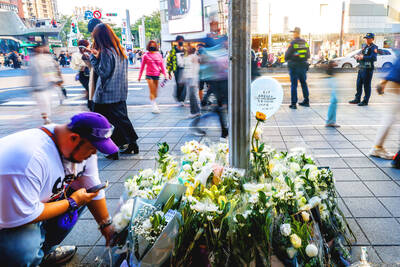The quality of tap water supplied to residents in Kaohsiung City and Kaohsiung County has improved significantly since a major national project was completed late last year and the water supplier's performance remains steady, the Environmental Pro-tection Administration (EPA) said yesterday.
After completing an inspection of Taiwan Water Supply Corp's seventh district management department in Cheng Ching Lake, Kaohsiung County, EPA officials said that residents in the south could be confident of the quality of tap water.
"According to our local bureaus in the city and the county, samples of tap water taken in the past few months have all passed the test," said Ho Soon-ching (
Yang Shui-yuan (
To improve the quality of tap water in Kaohsiung, the central government budgeted NT$15 billion in 2001 to have intake points in Kaoping River moved upstream and to build three advanced treatment plants.
In the past, Yang said, the unsatisfactory quality of tap water in Kaohsiung could be attributed to excessive levels of chloride, which was added to water to kill bacteria. Sometimes the chloride caused the formation of trihalomethanes, which is thought to be a possible carcinogen.
"Now we use much less chloride. The samples we took tested negative for trihalomethanes," Yang said.
Wang Mao-sung (王茂松), director of Kaohsiung County's Bureau of Environmental Protection, said residents' confidence in tap water would be restored. Many residents buy filtered water from street vendors at the price of NT$10 for 20 liter.
Meanwhile, at a meeting conducted by the Ministry of Economic Affairs yesterday, officials said the drought in the north had been relieved by recent rains. Water levels at major reservoirs are satisfactory, officials said.
"What we have now can sustain us until the end of May," said Chen Shen-hsien (陳伸賢), director-gene-ral of the Water Resources Agency.

Beijing could eventually see a full amphibious invasion of Taiwan as the only "prudent" way to bring about unification, the US Department of Defense said in a newly released annual report to Congress. The Pentagon's "Annual Report to Congress: Military and Security Developments Involving the People's Republic of China 2025," was in many ways similar to last year’s report but reorganized the analysis of the options China has to take over Taiwan. Generally, according to the report, Chinese leaders view the People's Liberation Army's (PLA) capabilities for a Taiwan campaign as improving, but they remain uncertain about its readiness to successfully seize

Taiwan is getting a day off on Christmas for the first time in 25 years. The change comes after opposition parties passed a law earlier this year to add or restore five public holidays, including Constitution Day, which falls on today, Dec. 25. The day marks the 1947 adoption of the constitution of the Republic of China, as the government in Taipei is formally known. Back then the Chinese Nationalist Party (KMT) governed China from Nanjing. When the KMT, now an opposition party in Taiwan, passed the legislation on holidays, it said that they would help “commemorate the history of national development.” That

HORROR STORIES: One victim recounted not realizing they had been stabbed and seeing people bleeding, while another recalled breaking down in tears after fleeing A man on Friday died after he tried to fight the knife-wielding suspect who went on a stabbing spree near two of Taipei’s busiest metro stations, Taipei Mayor Chiang Wan-an (蔣萬安) said. The 57-year-old man, identified by his family name, Yu (余), encountered the suspect at Exit M7 of Taipei Main Station and immediately tried to stop him, but was fatally wounded and later died, Chiang said, calling the incident “heartbreaking.” Yu’s family would receive at least NT$5 million (US$158,584) in compensation through the Taipei Rapid Transit Corp’s (TRTC) insurance coverage, he said after convening an emergency security response meeting yesterday morning. National

Taiwan has overtaken South Korea this year in per capita income for the first time in 23 years, IMF data showed. Per capita income is a nation’s GDP divided by the total population, used to compare average wealth levels across countries. Taiwan also beat Japan this year on per capita income, after surpassing it for the first time last year, US magazine Newsweek reported yesterday. Across Asia, Taiwan ranked fourth for per capita income at US$37,827 this year due to sustained economic growth, the report said. In the top three spots were Singapore, Macau and Hong Kong, it said. South